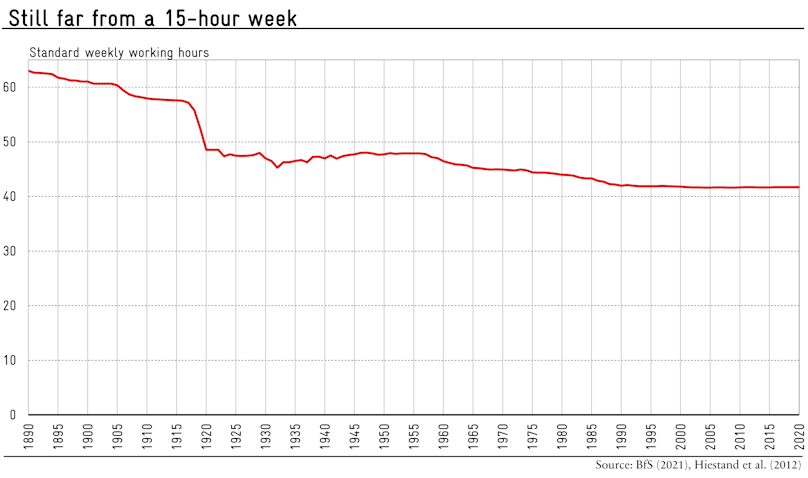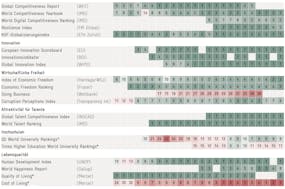As a rule, philosophers who encourage us to live a “good life” advise against working too hard and consuming too much. Their general recommendation is that instead of spending the day at the office or, even worse, commuting, we should invest more time in family and friends.
Looking back at the way people’s working hours have developed historically, it would initially appear that the Swiss have followed this advice. In 19th century factories, ten-hour workdays and six-day weeks were the norm. This translates into something between 2,500 and 3,000 working hours a year. Today the average is 1,400.
Heterogeneous workloads
This average, however, masks a very heterogeneous reality. Only the minority of people have freed themselves of the burden of paid work: pensioners. Around the year 1900, it was normal to work into old age: in France, 54 percent of over-65s were employed, and in Germany 58 percent. For Switzerland there is no corresponding data available for this period.
Today only 13 percent of over-65s in Switzerland are employed, most of them for only a few hours. The decline in working hours among the under-65s is much less pronounced. On the one hand women are increasingly taking up paid work, albeit predominantly on a part-time basis. Effective working hours among full-time employees remain at around 41 per week.

Famous misprediction
We thus work far more hours than the economist John Maynard Keynes famously mispredicted in around 1930. In anticipation of rising wages, Keynes considered a 15-hour week in 2030 to be realistic: People would be able to meet their consumption needs quickly and, free from economic constraints, would have plenty of free time for art and reading philosophy.
But this has not happened. Wages and incomes have indeed grown fairly continuously over the last hundred years. But as prosperity has increased, the supply of labor (except for pensioners) has declined much less than Keynes predicted.
Should the state intervene? Some think so and would like to impose a four-day week on everyone by popular vote. Is there some kind of market failure at play here that would need to be corrected? That’s unlikely. Apparently, we simply value consumption, which can be financed this way, more than additional free time.
The best paid work the most
A rapid change of mindset doesn’t seem to be in sight either. Of all people, it is the high earners ‒ who could afford a reduction in working hours anyway – who work the longest on average. According to data from the Swiss Labor Force Survey (Sake), the highest-paid 10 percent of employees (measured by hourly wage) work roughly eight hours more per week than the lowest-paid 10 percent. Assuming that productivity and pay continue to grow, this pattern could extend to the broad middle class.
However, the state could try to ensure that the workload gets better distributed over a person’s life ‒ instead of being concentrated in the middle of it. There would be many possible ways of doing this, from adjusting the statutory retirement age to revising the pension system so that contributions beyond retirement age count towards a person’s pension as well. Perhaps we should indeed do what the philosophers suggest ‒ and ask economists how best to achieve this goal.





